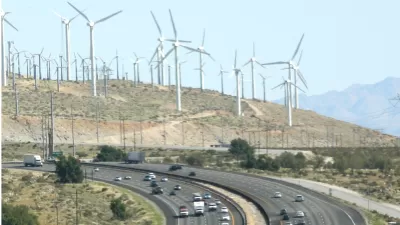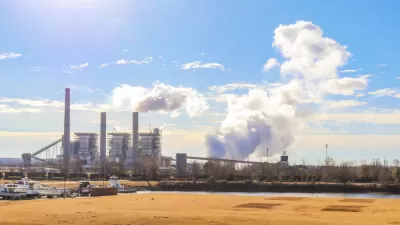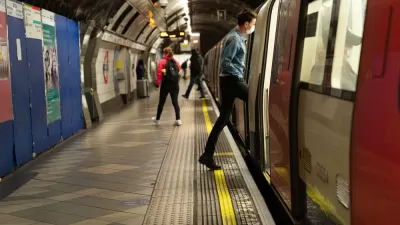The dramatic reductions in carbon emissions during the last year only highlight how drastically humans must change behavior to meet climate goals.

In the early months of the pandemic, the reduction in driving, carbon emissions, and traffic shone as one bright spot in the darkness of COVID-19. But the dramatic drop in greenhouse gas emissions brought on by pandemic closures won't last, writes Amina Khan in the Los Angeles Times, if governments don't take meaningful steps to maintain lower emissions and aggressively strive to hit their climate policy goals.
"To meet the Paris climate targets, the U.S. and the rest of the world will need to cut their emissions by about 1 billion to 2 billion metric tons per year — near-pandemic-level reductions — for every year throughout the 2020s." Yet "most current COVID-19 recovery plans are in direct contradiction with countries’ climate commitments."
One solution is to "ensure that post-pandemic growth is also tied to building a greener economy" and that new policies foster clean technologies as part of the economic recovery. The reduction in energy consumption during the pandemic was "deeply disruptive" to the lives of most people. But while Americans will largely go back to using the same energy-consuming devices and services they used before—and, in some cases, more of them as delivery services and digital tools become daily necessities—making those devices and services more energy-efficient can have similar and less disruptive benefits.
FULL STORY: COVID-19 helped slash 2020’s carbon dioxide emissions. How will we keep it going?

Planetizen Federal Action Tracker
A weekly monitor of how Trump’s orders and actions are impacting planners and planning in America.

Congressman Proposes Bill to Rename DC Metro “Trump Train”
The Make Autorail Great Again Act would withhold federal funding to the system until the Washington Metropolitan Area Transit Authority (WMATA), rebrands as the Washington Metropolitan Authority for Greater Access (WMAGA).

The Simple Legislative Tool Transforming Vacant Downtowns
In California, Michigan and Georgia, an easy win is bringing dollars — and delight — back to city centers.

The States Losing Rural Delivery Rooms at an Alarming Pace
In some states, as few as 9% of rural hospitals still deliver babies. As a result, rising pre-term births, no adequate pre-term care and "harrowing" close calls are a growing reality.

The Small South Asian Republic Going all in on EVs
Thanks to one simple policy change less than five years ago, 65% of new cars in this Himalayan country are now electric.

DC Backpedals on Bike Lane Protection, Swaps Barriers for Paint
Citing aesthetic concerns, the city is removing the concrete barriers and flexposts that once separated Arizona Avenue cyclists from motor vehicles.
Urban Design for Planners 1: Software Tools
This six-course series explores essential urban design concepts using open source software and equips planners with the tools they need to participate fully in the urban design process.
Planning for Universal Design
Learn the tools for implementing Universal Design in planning regulations.
Smith Gee Studio
City of Charlotte
City of Camden Redevelopment Agency
City of Astoria
Transportation Research & Education Center (TREC) at Portland State University
US High Speed Rail Association
City of Camden Redevelopment Agency
Municipality of Princeton (NJ)





























